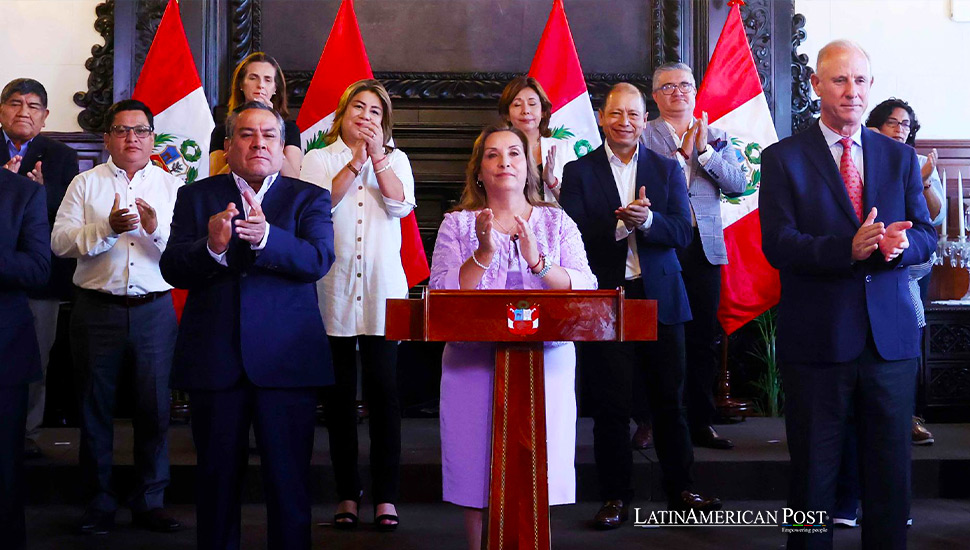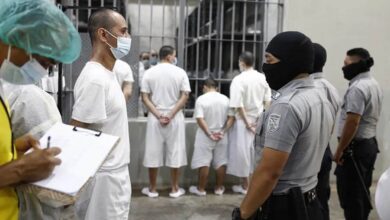Peru’s Presidential Crisis Expands from Rolexes to Bracelets and Bank Deposits

Peru’s President Dina Boluarte faces an expanded investigation into her assets, including a $56,000 Cartier bracelet and unexplained bank deposits, amid broader political unrest and calls for her resignation. The investigation spotlights ongoing corruption issues in Latin American politics.
In the political theater of Peru, President Dina Boluarte is embroiled in a controversy that has cast a long shadow over her administration and the nation’s governance. The Peruvian attorney general’s announcement of an expanded probe into Boluarte’s financial assets, including a $56,000 Cartier bracelet and bank deposits of “unknown origin,” has deepened the crisis. This development adds to the ongoing investigations on her possession of costly Rolex watches, further entangling her presidency in allegations of corruption and illicit enrichment.
Expanding Investigations
Juan Villena, the Attorney General, disclosed to a congressional commission that the investigation now encompasses Boluarte’s substantial jewelry collection, evidenced by her wearing pieces estimated at $500,000 during public events. These revelations come amidst a turbulent political climate in Peru, with Boluarte under increasing pressure to resign or face impeachment.
The genesis of this scandal traces back to bank transactions between 2016 and 2022, before Boluarte’s presidency. She has defended these transactions, attributing them to shared accounts related to her presidency of a regional club, and has staunchly refuted any allegations of corruption.
Political instability in Peru is not an isolated phenomenon but a recurring theme, with Boluarte being the sixth president since 2018. Following her predecessor’s impeachment for unconstitutional attempts to dissolve Congress, her ascent to power was marred by public unrest and violent clashes, setting a contentious tone for her term.
The “Rolex scandal” became public when a political YouTube channel, La Encerrona, analyzed thousands of Boluarte’s photographs and revealed her wearing several Rolex watches valued between $14,000 and $25,000 each. This led to the prosecutor’s office initiating “preliminary proceedings” against her for alleged “illicit enrichment” and failing to declare these luxury items. The scandal intensified when police and prosecutors raided Boluarte’s residence and office during Easter, searching for evidence related to the case.
Boluarte’s Response
In response to the escalating legal and political pressures, Boluarte has decried the raid as “abusive” and affirmed her intention to remain in office until 2026. Nonetheless, the Peruvian Congress has initiated steps toward her impeachment.
This political crisis in Peru echoes the broader challenges of corruption and governance in Latin America, where political instability and corruption scandals have become common. The region has witnessed high-profile cases involving top officials and leaders, from Brazil’s Operation Car Wash to Argentina’s notebooks scandal.
Peru’s political landscape, characterized by its high turnover of presidents and the constitutional provision allowing impeachment for “moral incapacity,” reflects its governance’s volatile and often unpredictable nature. This provision has led to the impeachment and subsequent legal troubles of several former leaders, including Pedro Pablo Kuczynski, Martin Vizcarra, and Pedro Castillo, illustrating the ongoing struggle for political stability and ethical governance.
The unfolding scandal involving President Boluarte highlights public officials’ personal accountability and underscores the systemic issues affecting governance in the region. These events indicate a larger pattern of political turbulence and corruption that has plagued Latin American politics for decades.
Lessons for Latin America
In the context of these broader regional trends, Peru’s situation serves as a critical case study in the complexities of political leadership, accountability, and the fight against corruption. The outcome of this scandal, whether it results in Boluarte’s impeachment or her continuation in office, will have significant implications for Peru’s political future and its role in the larger narrative of Latin American governance.
As Peru navigates this political crisis, the international community and regional observers closely watch, recognizing the potential ramifications for democratic stability and corruption prevention in Latin America. The resolution of this scandal could serve as a benchmark for addressing similar challenges across the region, highlighting the importance of transparency, accountability, and robust legal mechanisms in ensuring the integrity of public office.
Also read: Peru Mines for Growth Through Economic Diversification Beyond Extractives
The investigation into President Dina Boluarte’s assets and the ensuing political turmoil are more than a national issue; they reflect the enduring challenges of corruption and political instability that pervade Latin American politics. The need for comprehensive reforms and steadfast commitment to ethical governance is apparent as Peru grapples with these issues. This situation offers lessons and insights for the entire region’s quest for democratic stability and transparency.




